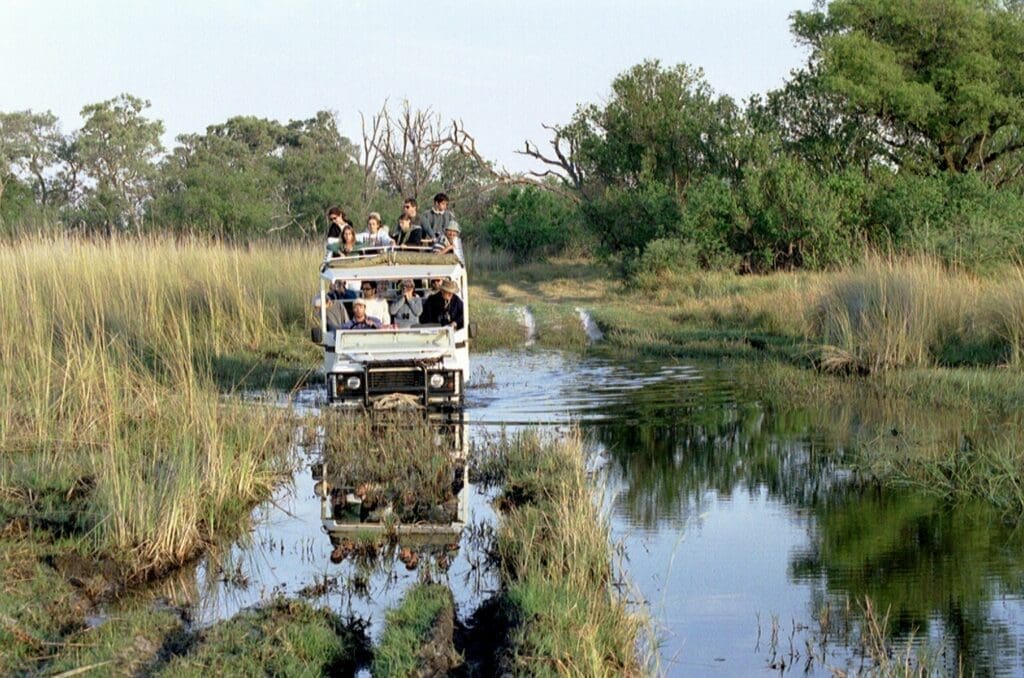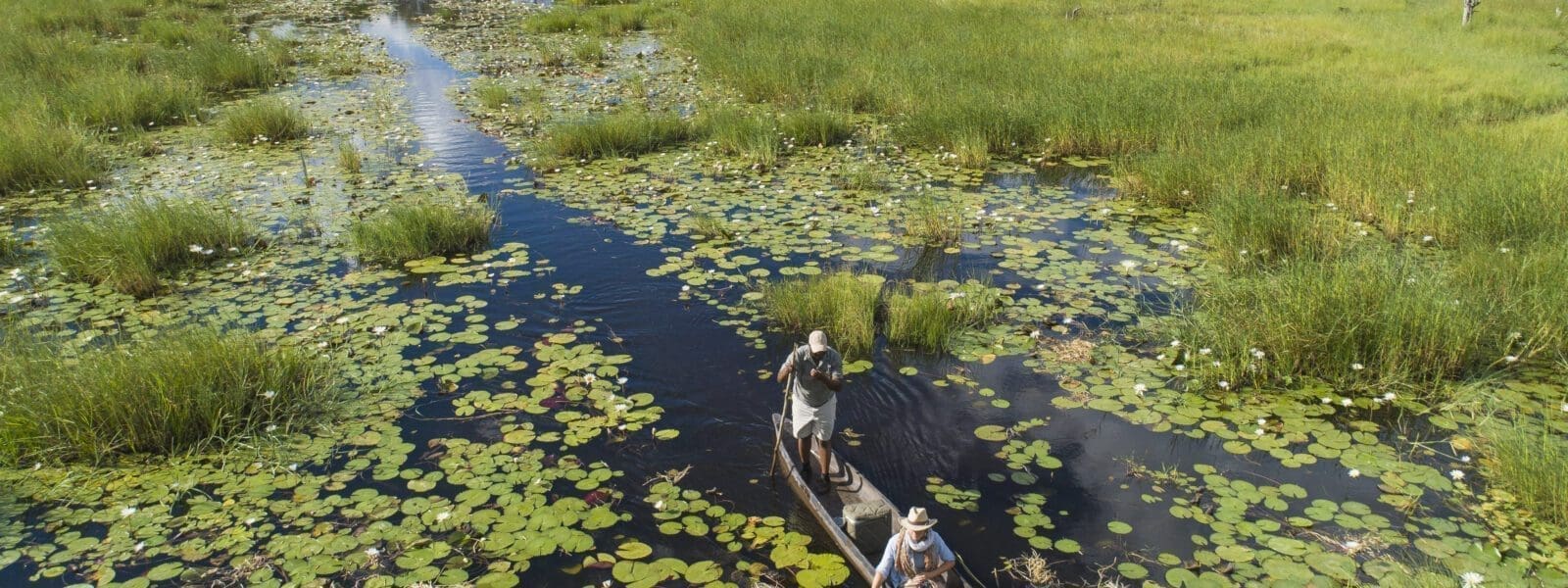Discover the Untamed Beauty of the Okavango Delta: A UNESCO World Heritage Site
Nestled in the heart of southern Africa, Exploring the Okavango Delta stands as a testament to the wonders of nature, offering a unique and awe-inspiring experience for all who venture into its embrace. This sprawling oasis is not only the largest inland delta in the world but also a haven for biodiversity and a testament to the delicate balance between human and natural ecosystems. In this blog post, we’ll delve into the size, history, wildlife conservation efforts, the parks within the delta, and the journey of a lifetime that awaits those who travel to the Okavango Delta.
The Okavango Delta, located in Botswana, spans an impressive 15,000 square kilometres, making it the largest inland delta on Earth. What makes it even more remarkable is that it’s situated in the midst of the arid Kalahari Desert. The delta is a result of the Okavango River, originating in the Angolan highlands, flowing into the flat and dry landscape of northern Botswana, forming a maze of lagoons, channels, and islands.
The Okavango Delta holds deep cultural and historical significance for the indigenous people of the region. The delta has been inhabited for thousands of years, with evidence of early human settlements and a rich oral history passed down through generations. Today, the people living around the delta, such as the Batswana, have a symbiotic relationship with the environment, relying on the delta’s resources for their livelihoods.
The Okavango Delta is a UNESCO World Heritage Site and a Ramsar Wetland of International Importance, highlighting its ecological importance. Its unique ecosystem sustains a breathtaking array of wildlife, including elephants, lions, leopards, and a plethora of bird species. Efforts to conserve the delta’s biodiversity have been ongoing for decades, with local communities, government agencies, and international organizations working together to protect this natural treasure.
Several national parks and wildlife reserves exist within the Okavango Delta, each offering a distinct experience for visitors:
- Moremi Game Reserve: This renowned reserve covers a significant portion of the delta and is celebrated for its diverse landscapes, from vast grasslands to dense forests. It is home to an abundance of wildlife, making it a prime destination for safari enthusiasts.

- Nxai Pan National Park: Situated on the northeastern edge of the delta, Nxai Pan is known for its expansive salt pans, providing a unique contrast to the lush landscapes of the delta. Visitors can witness the annual zebra migration, a spectacular natural phenomenon.
- Chobe National Park: While not directly within the delta, Chobe National Park lies just to the northeast and is famous for its large elephant population along the Chobe River. Boat safaris offer a different perspective, allowing visitors to witness wildlife from the water.
Reaching the Okavango Delta is a thrilling experience. Maun, the entryway to the delta, acts as the main access point for tourists. Starting from Maun, travelers can choose from different forms of transport, such as light airplanes, 4×4 vehicles, and traditional mokoro canoes, to venture into the heart of the delta. Numerous upscale lodges and tented camps provide various accommodation choices, enabling visitors to fully embrace the peace and serenity of the untamed nature. Maun is the primary entry point for visitors to the Okavango Delta, offering a range of transportation options. From light aircraft to 4×4 vehicles and traditional mokoro canoes, travelers have various modes of transport to explore the delta’s heart. Luxury lodges and tented camps provide a tranquil retreat amidst the wilderness, immersing visitors in the serene beauty of the surroundings.
The Okavango Delta stands as a testament to the beauty and resilience of the natural world. Its vast landscapes, rich history, and commitment to wildlife conservation make it a must-visit destination for those seeking an authentic and awe-inspiring African safari experience. Whether you’re an avid wildlife enthusiast or simply in search of a peaceful retreat, the Okavango Delta invites you to explore its wonders and become a part of its ongoing legacy of conservation and appreciation for the natural world.
What is the best time to visit the Okavango Delta?
The best time to visit the Okavango Delta is during the dry season, from May to October. This period offers optimal wildlife viewing, as animals congregate around the remaining water sources. The seasonal floods from the Angolan highlands typically reach the delta around June, making the landscapes lush and vibrant. However, the wet season (November to April) is ideal for birdwatching and seeing the delta’s stunning green scenery, though some areas may be harder to access due to flooding.
What wildlife can I see in the Okavango Delta?
The Okavango Delta is renowned for its rich biodiversity. Visitors can see a wide variety of animals, including elephants, lions, leopards, giraffes, zebras, and buffalo. The delta is also home to rare species like the African wild dog and the sitatunga antelope. The waterways and marshlands are rich in birdlife, with over 400 species of birds, including the endangered wattled crane and the African fish eagle, making it a prime location for birdwatching.
How do I get to the Okavango Delta?
The Okavango Delta is accessible by both road and air. Visitors can fly into Maun, Botswana’s nearest airport, which is well-connected to international airports, then take a small aircraft transfer to lodges or camps within the delta. It’s also possible to drive to Maun and then join organized safari tours that depart from the town. Once in the delta, the primary mode of transport is by boat (mokoro) or safari vehicle, depending on the water levels and terrain.
What are the key activities in the Okavango Delta?
The Okavango Delta offers a range of exciting activities, including traditional mokoro (canoe) rides, which allow visitors to explore the delta’s winding channels and view wildlife up close. Game drives and walking safaris are also popular for observing large mammals like elephants, lions, and leopards in their natural habitat. Birdwatching is exceptional year-round, and the delta is also known for its exceptional fishing opportunities. Visitors can also experience cultural interactions with local communities and visit nearby villages to learn about traditional lifestyles.


You must be logged in to post a comment.